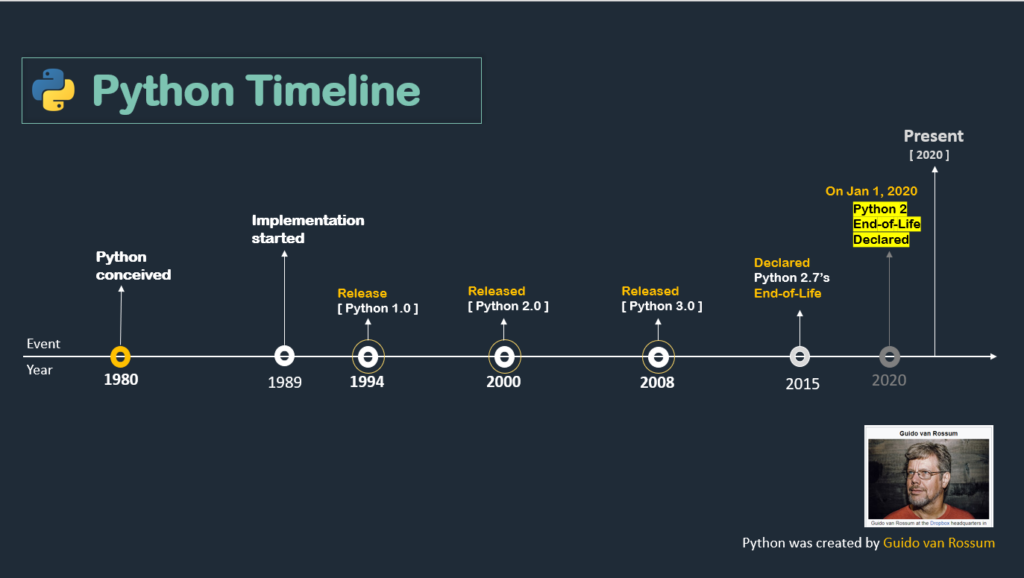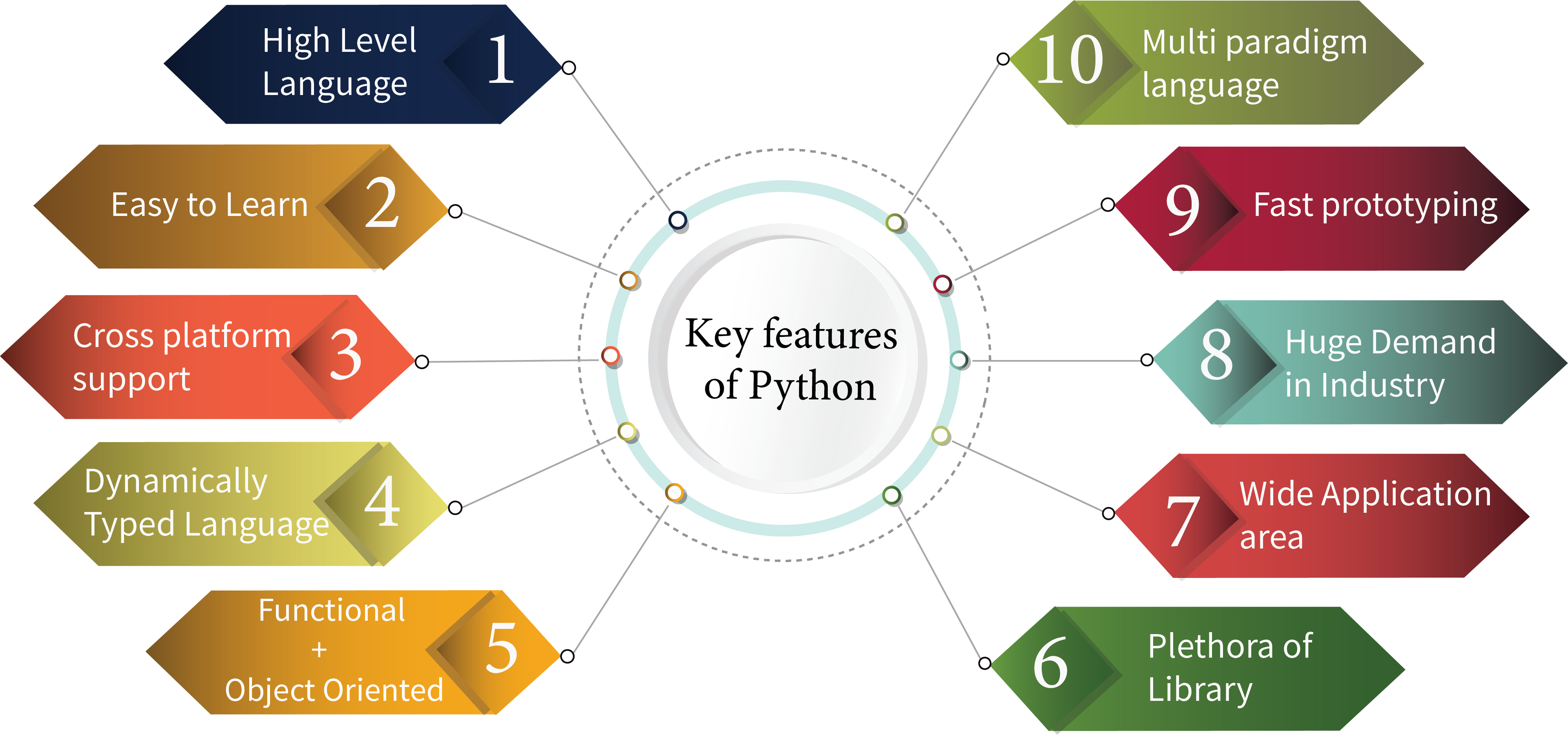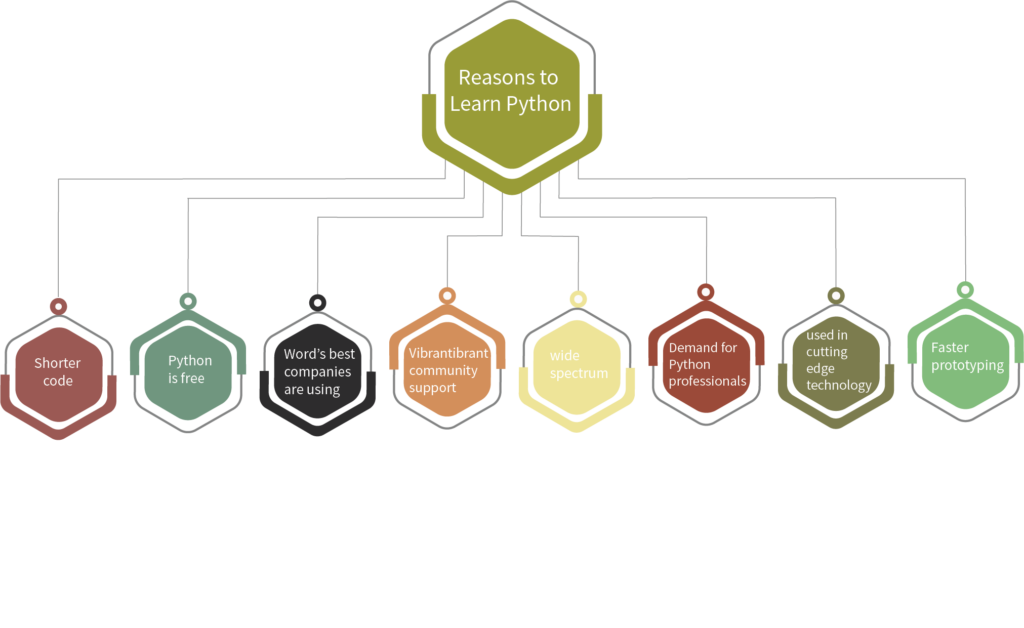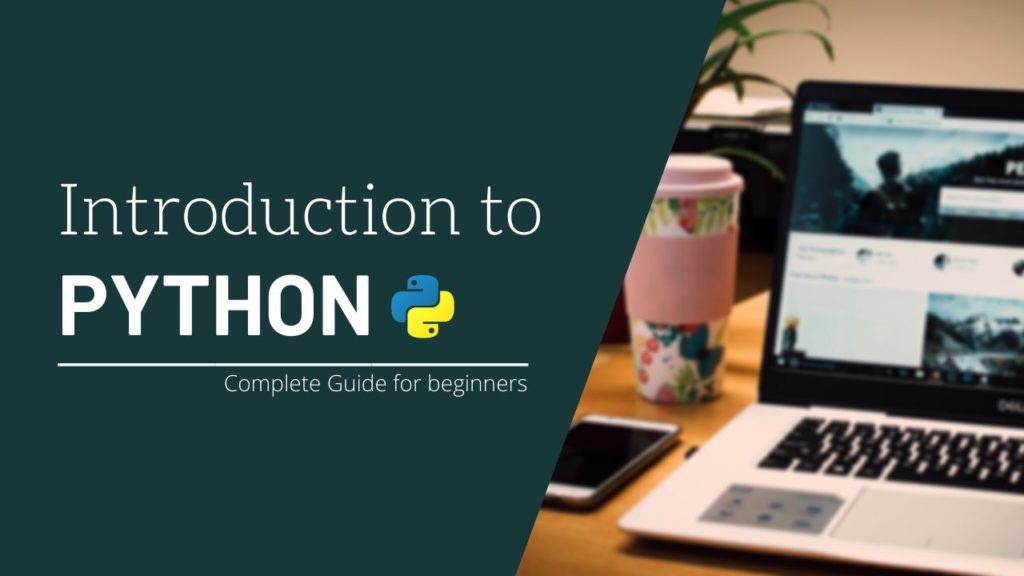After reading this article you will understand Python Introduction, Application, advantage and limitations of Python.
Python is currently, as of 2020, one of the most popular and preferred programming language on the Planet. Yes, you heard it right! The demand for python developers had grown immensely over the past many years. Python is getting superior with the addition of more and more libraries, which targets application in that specific area. In the fall of 2018, the Python Software Foundation together with JetBrains conducted the official annual Python Developers Survey and published the result. To the surprise, 84% of the developer has chosen Python as the first language of choice.
Python is simple and easy to use language so even if you are new to programming, you can learn python without any difficulties. In this article, we are going to learn about Python introduction, applications of python, a little background of python, reasons for its popularity, why companies are moving towards python and much more.
Table of contents
- Background of Python
- General Introduction to Python
- Python 3.x system requirements
- Video – Introduction to Python
- Key features of Python
- 7 reasons to Learn Python
- Python applications
- 5 Python limitations
- Conclusion
- Short Quiz
Background of Python
Python is developed by Guido van Rossum in 1989 at the National Research Institute for Mathematics and Computer Science in the Netherlands. Guido van Rossum used to enjoy a British comedy group Monty python’s flying circus, he loves the name so much that he decided to put the language name as PYTHON. Python was a successor of ABC language. Python is derived from many other languages including ABC, Modula-3, C, C++, Algol-68, SmallTalk and Unix shell.
Python’s development process is conducted largely through the Python Enhancement Proposal (PEP) process. PEP is a committee which falls under the Python software foundation. Python Software foundation holds all the IP rights and releases for Python software.
Python was conceived in 1980 and actual implementation started in 1989. The first Python version, Python 1.0, was released in 1994. The second major version of Python, Python 2.0, was released after 6 years in 2000. There were many improvements done over the period and the corresponding subversion were released. Python 2.x (x represents subversion) became extremely popular and picked up by a huge number of organizations for their project. The current version of Python, Python 3, was released in 2008 and this was the major improvement over the earlier version of Python. Jan 1st, 2020 is decided as the end-of-life for Python 2.x. The current version of Python 3 is 3.8.1 and Current version of Python 2 is 2.7.15 as of Feb 2020. A comprehensive article on Difference between Python 2 and 3 is available, read if you are interested.
Complete Python journey, till now, is depicted in the below image.

General Introduction to Python
Python is FREE (Open Source Software). Python is a high-level, dynamic, interpreted and general-purpose scripting language. Expression in python looks like a simple English sentence which is easy for us (humans) to understand, that’s what is meant by High-level. Python can be used to interact with OS (Operating System), read and write excel sheet, develop web application, retrieve information from a website (web scraping), build a modern machine learning model, analyze & visualize data and other countless areas. Although all applications of Python are not in the scope of this article, we will cover them in the coming post.
System Requirement Python 3
The system requirement for installing Python 3 is pretty simple and I guess these days almost every system meets the requirement. Find the minimum system requirements mentioned below for Installing Python on your machine.
Operating System (OS): Windows7 or later /Mac /Linux
RAM: 1GB or more
Hard Drive (HDD): 128 GB or more
Processor(s): 32 bit or 64 bit ( Intel Atom® processor or Intel® Core™ i3 processor)
However, using Python for advanced applications such as Machine Learning, Big data Analytics, Deep Learning, Data Science and similar, needs more than the minimum system requirements. Any system with below configuration should work perfectly fine (without putting you in more troubles).
Operating System (OS): Windows7 or later /Mac /Linux
RAM: 2GB or more – Prefer 4 GB
Hard Drive (HDD/SDD): 240 GB or more – Prefer SSD
Processor(s): Prefer 64 bit ( Intel® Core™ i3 processor or above, AMD) – with at least 2 cores having 4 or more threads.
Video – Introduction to Python
Key features of Python
Over the years, Python has marked its presence. It became the de-facto choice of a programming language, for all who wanted productivity, fast prototyping and easy integration with existing resources. Reason for Python’s popularity is various, among which we are going to focus on some of the key features.

Python is a High-Level language
Python is a high-level language, which is easy for a human to understand. In computer science, a high-level programming language is a programming language with strong abstraction from the details of the computer. Abstraction is the process of hiding critical background details of the system and focusing more on core software development so that the programmer doesn’t have to bother about all these background details. Python uses natural language elements, which makes the process of developing a logic easier and more understandable compared to any low-level languages. As a programmer or learner, we don’t have to bother about the critical areas of computing like memory management or garbage collector.
Python is Interpreted language
Practically, Python is both compiled and interpreted language. Yes, you heard it right. Although, it is referred interpreted language at most of the place. Now, the question is why it is generally referred to as Interpreted language? The answer is when we execute a python script, it compiles in the background and creates a bytecode and this byte code is checked line by line, if there is any error then the interpreter throws an error indicating the line as well. Since Python does not reveal it to the developer (and it is also not so important) that’s why it is considered as an interpreted language. I hope you got the point. In case you have more concern related to it then write in the comment section, we will respond.
Python is portable (cross-platform)
This is one of the most striking reasons for Python to grow. Portability refers to porting Python code from one platform to other. Python script written on the Windows Platform can be easily executed on Linux/MAC without any modification. This comes handy when organization operating globally and teams are using the various platform to develop the same code. However, to execute code on multiple platforms certain guidelines and libraries should be used. For example, if one uses an OS module of python on windows then the same code will not execute on Unix/Linux, because Windows path structure is different from Unix path structure. In such a situation, one should use pathlib module that works fine across all the platform.
Python is dynamically typed language
We have discussed it in many other articles at aipython. In Python, we don’t have to declare the data type of variable, it automatically is taken care of by Python during execution. Further, these variables can acquire different data type as an when requires.
Raspberry Pi loves Python
Python is a wonderful and powerful programming language that’s easy to use (easy to read and write) and, with Raspberry Pi, lets you connect your project to the real world. Raspberry Pi is one of the revolutionary credit card size computers. It has I/O port that can be triggered with Python. Python has been chosen as the language of choice for Raspberry Pi. You can write an amazing script to automate and control various real-world objects. This is the first time you will experience Python connection with real-world and does something tangible. You can find the list of amazing projects built using Raspberry Pi. You can also check out python introduction for raspberry pi.
Python has Enormous Libraries support
Python has a huge pool of libraries that target a wide variety of application. Two major categories of the library are associated with Python, one is In-built Library (Python standard library) and the others are Python supported third-party libraries. Installing Python brings standard library onto your system, and third party package can be manually installed using Python Package Manager tool (referred to as PIP). For example, to install NumPy (one of the famous Python library for data science), we can use pip command as mentioned below
pip install numpyMulti-paradigm programming language
Python supports both OOPs (Object Oriented Programming) paradigm as well as Functional programming paradigm. Everything in python is an object. In Object-Oriented Programming (OOPs) system, everything is centred around an object. It allows us to develop applications using an Object-Oriented approach. Object-oriented programming aims to implement real-world entities like inheritance, hiding, polymorphism etc in programming. The main aim of OOP is to bind together the data and the functions that operate on them so that no other part of the code can access this data except that function.
On the flip, the functional programming approach is different from OOPs. It aims at creating various function to solve a specific task or set of task and aggregate them together in one piece of code. A programmer can use the function(s) as an when required. It purely depends on a programmer on whether to choose a Functional style programming or object-oriented programming style.
Reasons to Learn Python
Till now you have understood about python background, overview and key features. Now, this is the time when you should also know the reasons to Learn Python. I will provide you with 7 reasons to learn python in 2020 and going forward.

- Shorter code to solve a complex problem – On the contrary to another programming language, it requires lesser code to solve the same problem. Coding in Python is super simple and easy for anyone to understand what’s going on.
- Python is free for everyone. As we know Python is open-source software available for free. It means everyone can afford it, use it and apply to solve the problem.
- Word’s best companies are using Python in various projects and application. Great technical organizations like Google, Facebook, Instagram, Dropbox, Amazon, Microsoft and many more are using python.
- Vibrantibrant community support makes the life of Pythonistas comfortable. Millions of active members on the community try to fix several problems and help to grow collectively. These community not only solves the problem but also helps in making Python more robust and mature. By leveraging the support of such a huge pool of resources Python is growing tremendously.
- Python covers a wide spectrum of the application be it Data science, data analysis, Machine Learning, Deep Learning, Biology, Maths, Physics, engineering, biotechnology or any other. So, a person from any domain can take advantage to learn python and apply in their problem-solving.
- Demand for Python professionals is growing day by day. New opportunities are being created thus the demand is more and it will grow more in future. Organizations are looking for a person with python knowledge. Python developers are also paid well.
- Python is used in cutting edge technology like Machine learning, Neural networks and data science. These technologies are challenging the conventional problem-solving approach and the results are pretty amazing. Python is the primary language of choice for these futuristic technologies.
Applications of Python
- Machine Learning
- Deep Learning
- Data Science
- Image Processing
- Artificial Intelligence
- Numerical computing
- Web Development & web scaping
- Application development (Desktop GUI)
- Computer vision
- IoT and Communication
- Software Development
- Automation
- Natural language processing (NLP)
- Self Driving cars
- Game Development
- Embedded Application
- and many more
5 Major Limitations of Python
Till now, we are just talking about the positive side of python on the flip side, there are some limitations of python as well
- Python is slow compared to other languages like C, C++, java
- Not used for Mobile Development
- Limited Database access applications
- Memory optimization is not so good
- Problem with multi-threading
Conclusion
This sections gave an Introduction of Python programming language, including the background of python, key features, application, advantages and limitations. Python is a great option, whether you are a beginning programmer looking to learn the basics, an experienced programmer designing a large application, or at any stage of programming.
PS: I hope you learned and enjoyed the post and this is my primary motive. I would love to hear from you about the contents and also your feedback, which will improve us better. Please share the content to someone who wants to learn Python.
Keep Learning and Keep Growing !!


aipython ….Great content….
Very helpful content for understanding the concepts of Python .